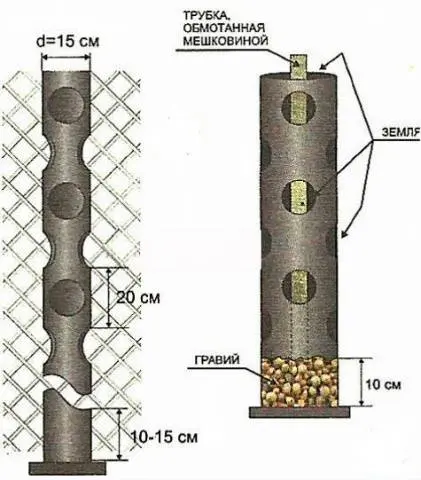Contents
If the summer cottage has a small garden, then this does not mean that you should give up growing flowers, strawberries, strawberries and other crops. In this situation, you need to turn on your thinking and expand the landing area. But how to do it? The elementary construction of vertical beds will help solve the problem. There are many ideas for creating a similar design, but the most popular is a strawberry bed made of pipes, which can be placed horizontally and vertically.
Positive and negative aspects of using PVC pipes for planting strawberries
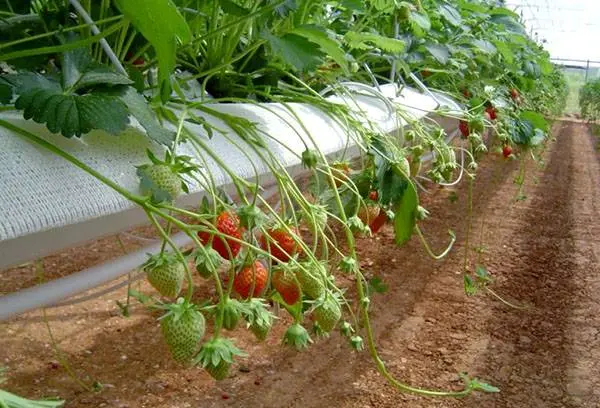
There are pros and cons to every technology. As for the construction of a seat for strawberries from plastic pipes, there are more positive aspects here:
- Immediately it should be noted the savings in space. From horizontally or vertically arranged PVC pipes, you can assemble a huge garden bed. It will fit up to a hundred bushes of strawberries or strawberries, and such a design will take a small area in the yard.
- The design of plastic pipes is mobile. If necessary, it can be moved to another place, and when frost sets in, it can be brought into the barn.
- Growing strawberries and strawberries are all on top. The berries are easy to pick without bending over, and they are all clean without sand. The beds are not overgrown with grass, which simplifies planting care.
- Several strawberry bushes grow in each PVC pipe. In the event of an epidemic, it is enough to remove the section with affected plants so that the disease does not spread to other plantings.
Of the minuses, certain costs for the purchase of sewer plastic pipes can be distinguished. However, there is a positive side to this as well. PVC pipe is characterized by a long service life. A vertical garden bed will only require a one-time large investment. Further, the design will only bring profit in the form of delicious berries.
The main disadvantage of PVC pipe beds is their insulation for the winter. The fact is that a small amount of soil in a plastic container freezes during severe frosts. This will kill the strawberry roots. For the safety of plantings, each pipe is wrapped with insulation for the winter. If the beds are small, they are brought into the barn.
The procedure for the manufacture of vertical beds
To make vertical beds for strawberries, you need to purchase sewer PVC pipes with a diameter of 110–150 mm. Plantings need to organize watering. This will still require a polypropylene pipe with a diameter of 15-20 mm. It should be noted right away that there are two ways to make a garden bed:
- Each prepared pipe is simply dug vertically. The method is simple and cheap.
- You can assemble a vertical bed using knees, tees and crosses. You will get a large wall in a V-shape or other shape. The design will be mobile, comfortable and beautiful, but very expensive.
It is better for novice gardeners to stop at the first method, and we will now look at how to make such a bed.
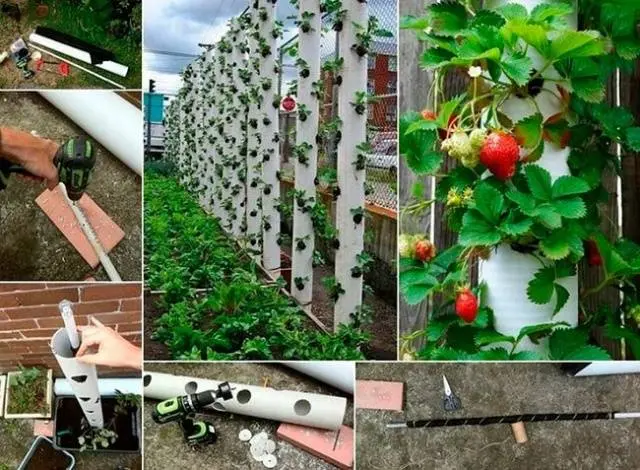
So, having bought all the material, proceed to the manufacture of beds:
- Sewer pipes are commercially available in different lengths. Immediately you need to decide on the height of the beds. If it was possible to buy only too long pipes, they are cut into blanks of the required size. The ideal height is a strawberry bed made of PVC pipes 2 m long.
- When blanks are cut from plastic pipes of large diameter, they begin to manufacture an irrigation system. A thin polypropylene tube is cut into pieces, 10 cm longer from thick blanks.
- The lower part of the irrigation pipe is closed with a plug. Starting from the top, the third part of it is drilled with a conventional drill with a diameter of 3–4 mm. Holes are made at approximately equal intervals.
- The perforated workpiece is wrapped with a piece of burlap, securing it with copper wire. The fabric will prevent soil from clogging the drainage holes. A similar procedure is performed with all thin tubes.
- Next, proceed to the processing of a thick pipe. To work, you need an electric drill with a crown nozzle with a diameter of 15 cm. Using a crown, holes are cut out on the side wall of the pipe. The first is located 20 cm above ground level. Here it is also necessary to take into account the part of the pipe buried in the ground, if this method of installing the beds is supposed. The remaining holes are drilled in 20 cm increments. The number of landing slots depends on the height of the structure. If the structure is installed leaning against the wall, then the landing nests are drilled only from the front side of the bed. In another case, the perforation of the sewer pipe is performed in a checkerboard pattern on both sides.
- The drilled thick workpiece is closed from below with a plug, after which it is vertically installed in its permanent place.

- Inside a vertically standing sewer pipe, a thin perforated blank is inserted strictly in the center with the plug down. The space of a thick pipe to a height of 10 cm is covered with gravel, and then filled to the top with fertile soil. For better stability, it is good if the vertical bed from above is fixed to a reliable support.
- The soil is watered through the drainage tube until completely saturated with moisture. Bushes of strawberries or strawberries are planted in planting nests.
Further care for strawberry plantations involves only timely watering and fertilizing through drainage tubes.
The video talks about the strawberry garden:
Growing strawberries in horizontally laid pipes
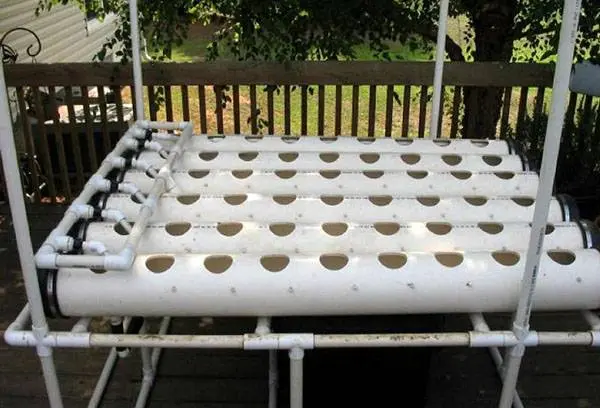
You can grow strawberries not only in vertical pipes, but also laid horizontally. The photo shows an example of how to make such a structure. Such beds are installed under strawberries raised to a height convenient for maintenance. The principle of manufacturing the structure is almost the same as in the case of the vertical counterpart:
- The sewer PVC pipe is perforated in one line, forming seats. The holes in the plastic are cut with a crown with a diameter of 10-15 cm at a distance of 20 cm.
- Both ends of the thick workpiece are closed with plugs. In the center of one cover, a hole is made for the irrigation pipe. In the second plug, a hole is cut on the bottom. Here, with the help of a transitional fitting, a hose is attached, descending into a container installed under the bed. This is where excess water will drain.
- A horizontally laid thick billet is covered by 1/3 with expanded clay, washed in water with vinegar. Fertile soil is poured on top of the drainage layer. When it fills half of the free space, an irrigation perforated blank is inserted. It is made in the same way as it was done for a vertical bed. The free end of the irrigation pipe is led out through the hole in the center of the plug. Next, the sewer pipe is filled to the top with soil.
- A similar procedure is performed with all blanks. Under the horizontal beds, a stand is welded from rods or a corner. It can be made wide to fit several blanks in one row.
When the horizontal bed is made, the soil is well moistened in the pipes, after which a strawberry bush is planted in each window.
Watering a horizontal bed
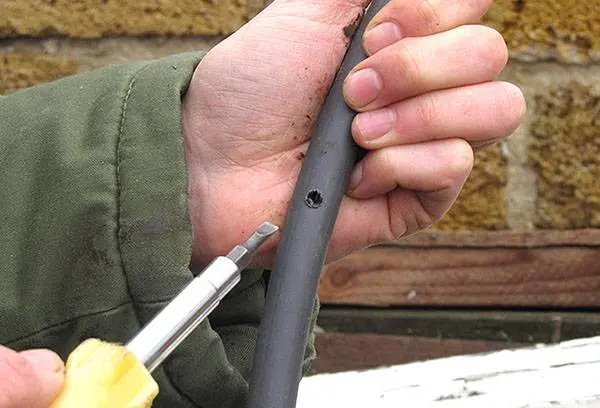
So, the beds for strawberries with their own hands are ready, the strawberries are planted, now they need to be watered. This is done through thin watering tubes protruding from thick blanks. In the case of vertical beds, water can be poured manually using a watering can. On large plantations, a pump is connected. Horizontal plantings with strawberries cannot be watered with a watering can. Here, irrigation is organized in two ways:
- If there are not very many horizontal plantings, a tank is installed for their irrigation. It must be at a height so that there is pressure in the system. All irrigation nipples protruding from the beds are interconnected using fittings and a hose into one irrigation system. It is connected to the installed container with water. At the outlet of the tank, a valve is installed to regulate irrigation. When the soil is dry, the owner opens the tap, water flows by gravity under the roots of the strawberries, and its excess drains through a drainage hose attached to the opposite side of the pipe with a plug.
- It is unrealistic to water large strawberry plantations with horizontal beds from a tank. For these purposes, a pump is used instead of a storage tank. Moreover, it is installed in a container for draining excess water. The irrigation system is turned on as the soil dries. It turns out a kind of water cycle. The pump pumps water under the strawberry roots. Excess liquid is drained back into the container, from where it is again sent in a circle. However, part of the water is absorbed by plants, so you need to monitor and replenish the container in time. If desired, this process can be automated with sensors and the installation of a time relay.
If you need to feed strawberries, the fertilizer is simply dissolved in irrigation water.
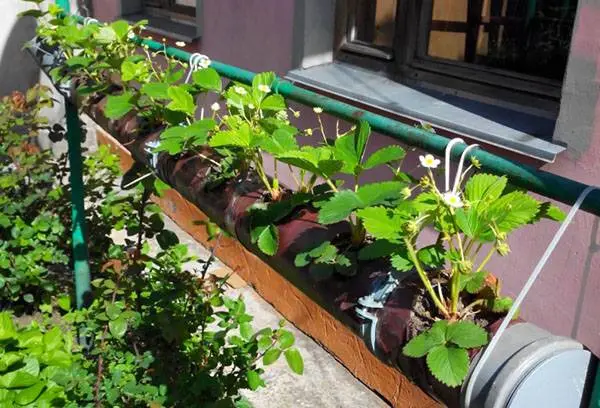
If there is an empty heated room at home, you can move a small plantation with strawberries there for the winter. This will allow you to enjoy delicious berries all year round.










